

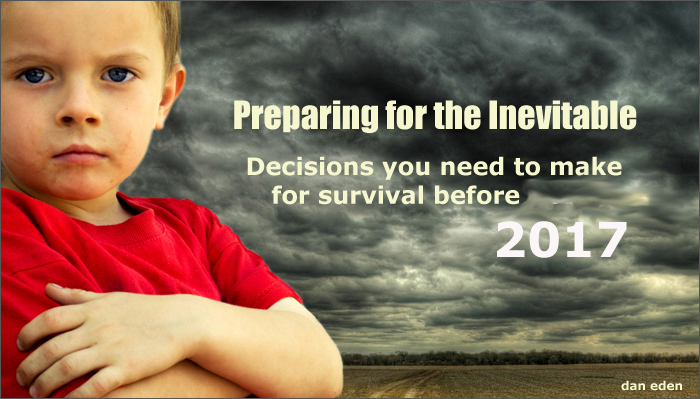
Preparing for the Inevitable
Part 2: Living Without Electricity || Part 3: Water, the Source of Life Part 4: Eating Dog Food? || Part 5: Money and Barter
 Food and Food Substitutes? Imagine that you are watching your television some evening. The words "BREAKING NEWS" flash across the screen and you are told of an impending disaster. In addition to grabbing your "bugout bag" and packing the family in the car, you decide to make a stop at the supermarket to pick up some food supplies. When you get there, almost everything you wanted to buy is already gone. There are some items, but are they nutritious? Can your family actually survive on eating just rice or pasta? Will canned Spam give you all the essential vitamins you need? Ironically, I was faced with a similar problem many decades ago, when I was a student at the University of Massachusetts. It wasn't a disaster of global proportions, but it was a financial disaster that almost made me quit school. I had only enough savings for tuition, was already sharing a room with my girlfriend, and had just a few dollars left for food. One of my courses, ironically, was called "Food Science" and the curriculum taught us about the essential nutrition requirements needed to sustain human life and health. Most people need from about 2000 to 2500 calories per day. These calories should be from a variety of different food sources so as to meet the Recommended Daily Allowances (or RDA). There should be adequate carbohydrates (from sugar and starch) for energy, as well as some fat (necessary to utilize fat soluble vitamins). Humans also need bulk (indigestible material) to keep everything moving in the digestive tract. A breakdown of the vital nutritional requirements are as follows:
We used to joke that the lab rats ate better than us poor students with their daily ration of "pellets". We mused that it was a shame there wasn't such a thing as a "human pellet." Our professor suggested we take a serious look at dog food! Dog Food for Humans?
Lest you think this is crazy, here is another story.
A New Zealand company producing dog food offered its products to aid starving children in Kenya. The producer maintained her special nutritious dry food mix is fit for human consumption, but Kenyans were offended and outraged by the offer. Government officials and aid organisations have rejected the offered 42 tonnes of "dog food". Dry dog food, called kibble in the US, is produced by one of two methods, extrusion and baking. During the extrusion process, cut dough or a mixture of raw materials is fed into an expander, while pressurized steam or hot water is added. When removed from the high pressure that results, the pellets puff up like popcorn. The resultant kibble is allowed to dry, then sprayed with vitamins, fats and oils, or any other ingredients that are not heat-tolerant.
If extruded kibble is exposed to air for too long or not properly stored, the fats and oils added after cooking can become rancid, and vitamins and minerals in the food may be destroyed by heat during storage or shipping. So it's a good idea to store the "human pellets" in an air tight container or bag. The good things about dog food? For one, it's inexpensive. A 40 pound bag of "the good stuff" will run you about $17.95 and feeds an adult human for about 20 days. Dry dog food is formulated to contain almost everything you need to live. It doesn't taste too bad and you can always get creative with condiments like ketchup or mix it with rice. But its most appealing aspect is that it is likely to be available when all other supermarket food has been exhausted. So if the sirens are blowing, grab a couple of 40 pound bags and you're all done! The negative aspect is that your dog may give you odd looks and you may find yourself having the urge to take long walks. Vitamins Of course you will want to have some vitamins with your emergency food supply, but you may want to have more than just your average daily supplements.
Some cataclysmic scenarios have the earth plunged into darkness by debris clouds from meteorites or colossal storms. Others have radioactive fallout or debris falling from the sky that force survivors to take cover underground for long periods. Without adequate Vitamin D you can suffer from bone loss and deficiencies of the immune system. Read this important article on Vitamin D in viewzone. While the usual recommendation is for 5,000 to 10,000 units, the additional stress of your survival situation can warrant twice that amount. It is a good idea to stock up on Vitamin D capsules in addition to your daily vitamin supplements. Vitamin C is another vitamin that you should stock up on. Usually found in fresh vegetables and fruits, produce will likely be rare in a survival situation. It doesn't take long for a Vitamin C deficiency to make you ill. Poor Nutrition Let's have a look at some of the most common illnesses that can result if you become deficient in some of the essential nutrients. The top four are:
 
Comments: A while back I went to the refrigerator and found a half empty can on tuna, made myself some tuna salad with mayonnaise, and had a sandwich. As I was eating it, I thought it was one of the most delicious tuna salad sandwiches I had ever tasted. I especially liked the little bits of carrot... but then I thought, "Where did the carrots come from?" Inspecting the can again I discovered I had been eating cat food! But, you know, it was good! F.S. While I would try the dry food, I don't think I would ever be able to eat the canned stuff. Just putting it in my dog's dish sometimes make me want to puke. But who knows, in case of an emergency. People have been known to eat each other! So I might be tempted to try it. Good info on the vitamins and the need for vitamin D in sunless days. I heard that might have been responsible for the plagues suffered right after Krakatoa when the earth was full of ash and debris. G.S. I read that animals manufacture their own vitamin D in their skin and lick it off when they groom their fur. So the dog food might not contain enough of that vitamin. It is even more reason to have additional supplements in an emergency. T.O.M
LMAO! I tried eating dry dog food for a while when I was unemployed and living in a trailer... for real. Yes, you can stay alive on it but you come to realize why dogs are always begging for human food. It is soooo boring! I used to visit friends around dinner time, hoping they would invite me to have something. Bad times, I hope I never see them again. B.S.
 
|
Editor/viewzone.com
myristicin@hotmail.com

This article shows you how to "read" the eyes of your lover, boss or politician. It's the same tried and tested method used by Homeland Security, the police and FBI.
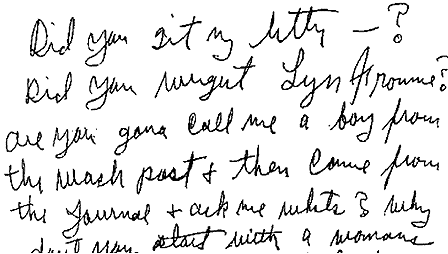
Learn everything about handwriting analysis in these free viewzone lesson by a professional!
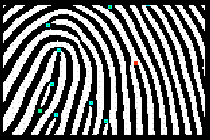
Each person's fingerprint is unique. Exactly how do they match them so quickly?

What do your color preferences reveal about your hidden personality. See what advertisers and marketing professionals have known for decades.
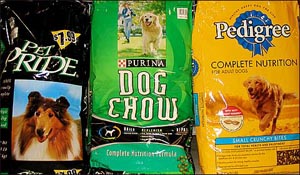 My friend, Barry, and I pooled our cash and bought a large bag of Gavy Train. According to the ingredients, it had everything that a mammal needed to live except Vitamin C. The professor explained that dogs produced their own Vitamin C. So Barry and I made sure to beg an orange a day from our girlfriends who got them easily from the school cafeteria. Aside from being the butt of jokes (mostly barking noises) from the other dorm residents, and some unusual bowel movements (dry dog food has some bone meal in it), we maintained our weight and health for five months.
My friend, Barry, and I pooled our cash and bought a large bag of Gavy Train. According to the ingredients, it had everything that a mammal needed to live except Vitamin C. The professor explained that dogs produced their own Vitamin C. So Barry and I made sure to beg an orange a day from our girlfriends who got them easily from the school cafeteria. Aside from being the butt of jokes (mostly barking noises) from the other dorm residents, and some unusual bowel movements (dry dog food has some bone meal in it), we maintained our weight and health for five months.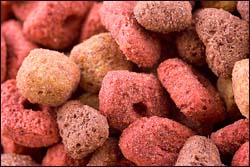 Aside from vegetable material, the meat and poultry ingredients are not always something you want to think about. They can be made of any part of an animal that is eatable. Dogs don't care where the meat comes from -- should you? In fact, the standards for pet food are much lower than those for human consumption but, in the end, all of the meat and meat "by products" are sterilized by high temperatures and rendered safe and free from disease.
Aside from vegetable material, the meat and poultry ingredients are not always something you want to think about. They can be made of any part of an animal that is eatable. Dogs don't care where the meat comes from -- should you? In fact, the standards for pet food are much lower than those for human consumption but, in the end, all of the meat and meat "by products" are sterilized by high temperatures and rendered safe and free from disease.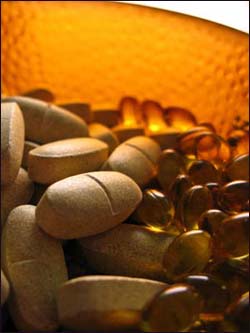 Vitamin D is produced by the body when our skin is exposed to sunlight. About half an hour of moderate exposure is usually enough to maintain your daily requirement. But what if you are not able to get sunlight?
Vitamin D is produced by the body when our skin is exposed to sunlight. About half an hour of moderate exposure is usually enough to maintain your daily requirement. But what if you are not able to get sunlight?